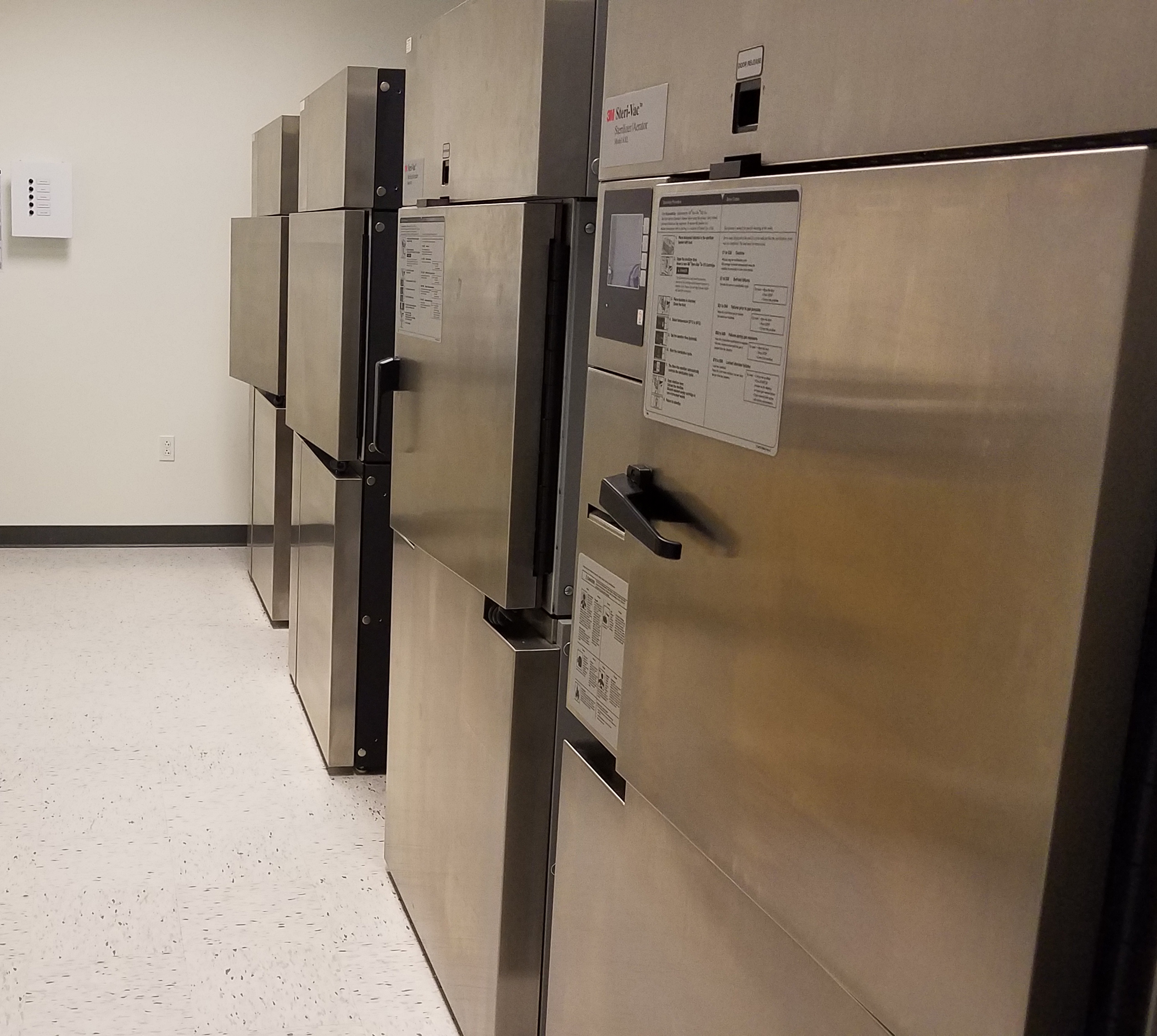- 3M® GS8 automated EO sterilizers (100% EO, 7.2 cu ft per load)
- Small production runs; R&D runs; rapid turn-around
- 50 load-runs per week capacity
- Sterilization validations
- Sterile (cleanroom) packaging (Tyvek®-poly pouch/ Tyvek®-molded tray)
- Custom labeling (FDA-compliant)
Summary
Ethylene oxide is a low temperature gaseous process used to sterilize healthcare products, medical devices, electronics, certain foods and spices and other temperature-sensitive products and materials. Ethylene oxide (EO or EtO) is a toxic gas that should only be handled and used by trained experts in controlled environments. Using a vacuum-based process, EO sterilization can penetrate the surface of plastic medical devices. Its low process operating temperature makes it an ideal non-destructive process for a wide variety of polymeric, organic and metallic materials.
What Is Ethylene Oxide Sterilization?
Ethylene oxide sterilization comprises four elements:
- Gas concentration
- Relative Humidity
- Temperature
- Gas exposure Time
EO is an alkylating agent that disrupts cellular metabolism and reproductive processes of microorganisms. EO penetrates breathable packaging, contacting all accessible surfaces of the product to deliver the required SAL (sterility assurance level).
Ethylene Oxide: Industrial Uses
EO is suitable for the sterilization of a wide range of materials not compatible with other methods of sterilization. Products commonly processed with ethylene oxide are:
- Complex device assemblies
- Lumened catheters
- Surgical procedure packs
- Multi-lumen tubing products
- Intervascular stents and implantable devices
- Wound dressings and bandages
- Spices, Tea, Tobacco products
- Micro and nano scale electronic components
Advantages of Ethylene Oxide Sterilization
- Materials sterilized with EO are not exposed to excessive heat, moisture, or radiation. Therefore, a wide variation of materials, particularly polymeric components commonly used in medical devices, can be sterilized with EO. For material compatibility information, refer to AAMI TIR 17 (compatibility of materials subject to sterilization).
- Products can be sterilized in their final packaging, since EO will permeate the sealed films and cartons used to package the device.
Applicable Standards:
- ISO 11135, Sterilization of health care products – ethylene oxide – Requirements for development, validation, and routine control of a sterilization process for medical devices.
This international standard outlines the requirement for the validation of an EO process to ensure that product processed through the validated process meets the required SAL. - ISO 10993-7: Biological evaluation of medical devices — Part 7: Ethylene oxide sterilization residuals
Trace levels of EO and ethylene chlorohydrin (ECH) may remain on products after an EO sterilization process. ISO10993-7 outlines the specific limits of EO and ECH that must not be exceeded in order to ensure product and patient safety.
Data on meeting these limits is established during the validation of the EO process.
Sterile Packaging and Related Support Services
- Consultation on packaging and product device design
- Sterile packaging services:
- Tyvek®-poly pouch packaging
- Tyvek®-molded tray packaging
- FDA-compliant medical device and product labeling services
- Validation of EO sterilization processes
- Final product sterilization testing (SAL)
- Medical device engineering process development

